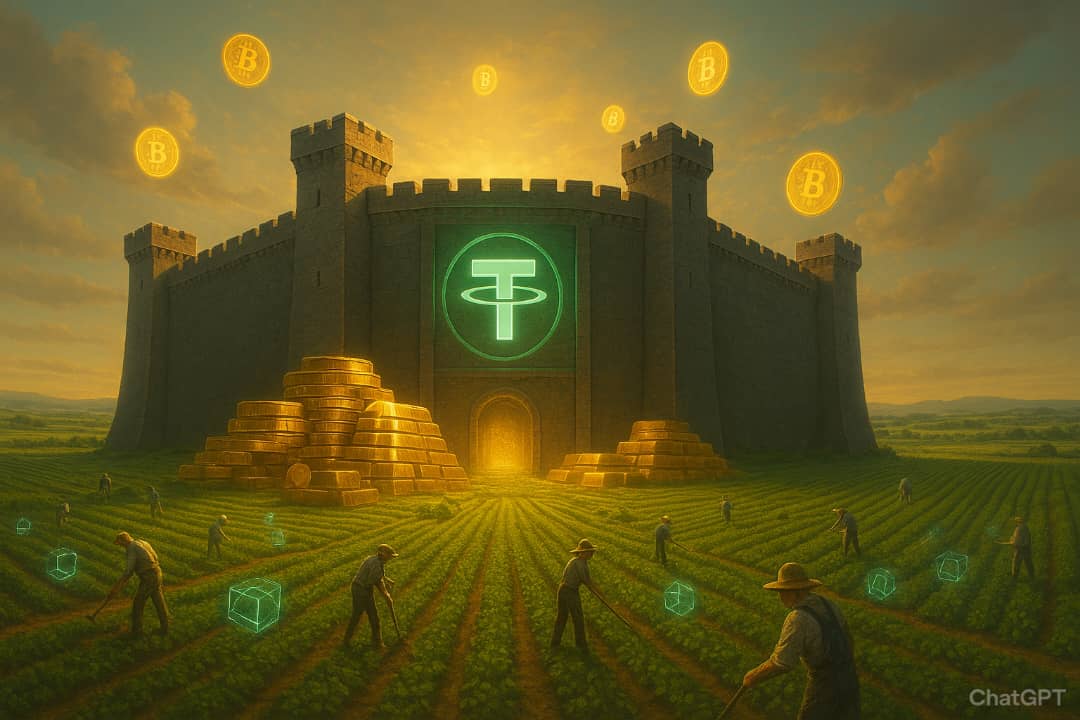Tether has purchased another 8,888 BTC, increasing its total on-chain holdings to 86,335 BTC. At current prices, that’s worth over $9.7 billion, according to CoinMarketCap.
The company, however, claims its real stash is much larger. Tether reports holding over 100,000 BTC along with 50 tons of gold. It has also committed 15,000 BTC into Bitcoin XXI, a treasury management firm focused on Bitcoin strategies.
This steady accumulation shows how Tether is doubling down on Bitcoin as a reserve asset. While most stablecoin issuers remain tied to U.S. Treasuries, Tether is openly diversifying into scarce digital and physical stores of value.
Investment in South American Agriculture
Beyond Bitcoin, Tether has been moving aggressively into traditional hard assets. The company owns 70% of Adecoagro, a major agricultural group in South America.
Adecoagro operates more than 210,000 hectares of farmland across Argentina, Brazil, and Uruguay. The land produces crops, dairy, and bioenergy, giving Tether direct exposure to food production and commodities.
This move highlights a long-term play. Instead of only relying on cash reserves, Tether is positioning itself in sectors that generate real-world value. Owning farmland in some of the most fertile regions of the world aligns with the company’s strategy to hedge against inflation and currency volatility.
A Push Into Hard Assets
This accumulation of Bitcoin, gold, and farmland fits a clear pattern. In May, Tether reported holding 100,000 BTC and 50 tons of gold in reserves. The firm has been public about its desire to move beyond just U.S. Treasuries and money market funds.
For Tether, hard assets mean stability. Bitcoin offers scarcity in the digital realm. Gold provides centuries of recognition as a safe haven. Land, particularly farmland, delivers both security and productive yield. Together, these holdings paint a picture of a company preparing for long-term resilience.
Stablecoin Market Nears $300 Billion
While Tether diversifies reserves, the broader stablecoin market is also expanding fast. According to data shared, stablecoin supply is on track to approach $300 billion.
This growth has been fueled by supportive policies from the new crypto-friendly administration in Washington. Regulators are encouraging integration of stablecoins into global finance, making them a key liquidity tool for crypto adoption.
More issuance means more liquidity. And more liquidity tends to boost trading volumes, DeFi activity, and token valuations. For Tether, which remains the largest stablecoin issuer, this environment provides a strong foundation to expand its influence.
Tether’s Strategy Compared to Rivals
Tether’s approach stands out compared to competitors. Other issuers like Circle focus mainly on short-term Treasuries and cash equivalents. Tether, however, is building a diversified portfolio of both digital and physical assets.
By doing so, it positions itself not only as a financial player but also as a resource-backed institution. This strategy can help protect USDT holders against systemic risks while creating long-term value.
Tether’s CEO has consistently argued that the company does not want to rely solely on the U.S. financial system. The investments in gold and farmland prove this point. The purchase of additional Bitcoin reinforces it further.
Why It Matters for Crypto Markets
Tether is more than just a stablecoin issuer. With USDT commanding the highest market share in the sector, its balance sheet decisions carry weight for the entire crypto ecosystem.
When Tether buys Bitcoin, it reduces supply on the market. When it invests in farmland or gold, it signals confidence in real-world hard assets. These moves can influence not only investor sentiment but also broader discussions on what makes a reserve truly “stable.”
The stablecoin sector now represents a critical backbone of crypto liquidity. If Tether’s hard asset strategy proves successful, other issuers may follow. That could shift the reserve composition of the entire industry away from being dollar-centric toward more diversified, global holdings.
Tether’s next steps will be closely watched. Will the company continue scaling its Bitcoin reserves past 100,000 BTC? Will it increase gold holdings beyond 50 tons? Could it expand farmland operations to other regions?
For now, the pattern is clear. Tether is building a reserve that blends digital scarcity, natural resources, and financial instruments. The result is a hybrid model, part crypto-native, part old-world stability.
As the stablecoin market edges closer to $300 billion, Tether is ensuring that it remains more than just a liquidity provider. It is positioning itself as a heavyweight treasury with hard assets at its core.
For crypto investors, this strategy underlines a broader message: stability in the future may not come from dollars alone, but from a mix of Bitcoin, gold, and land.
See more analysis on Tether’s BTC accumulation here: Thuan Capital.
Disclosure: This is not trading or investment advice. Always do your research before buying any cryptocurrency or investing in any services.
Follow us on Twitter @themerklehash to stay updated with the latest Crypto, NFT, AI, Cybersecurity, and Metaverse news!

